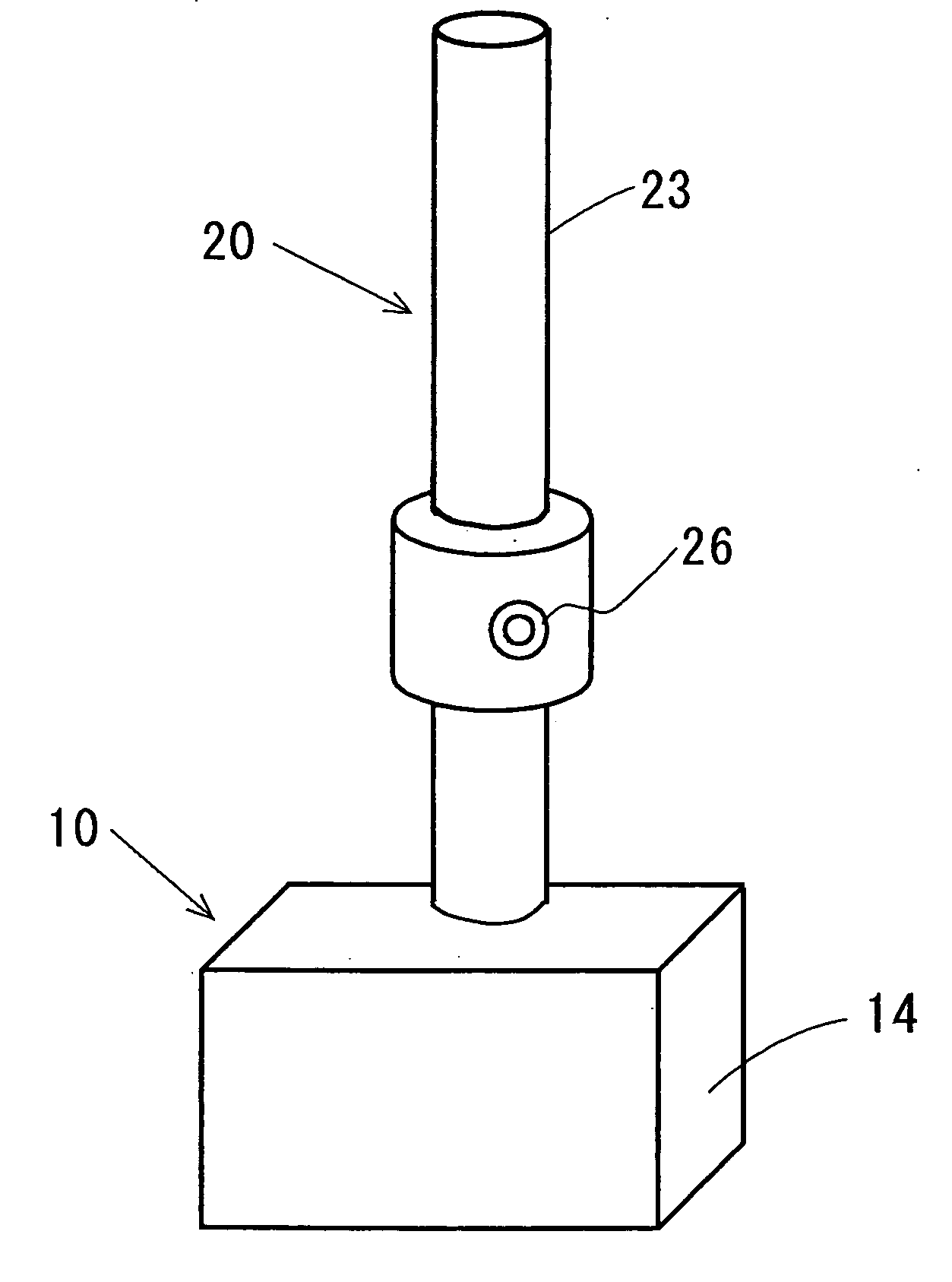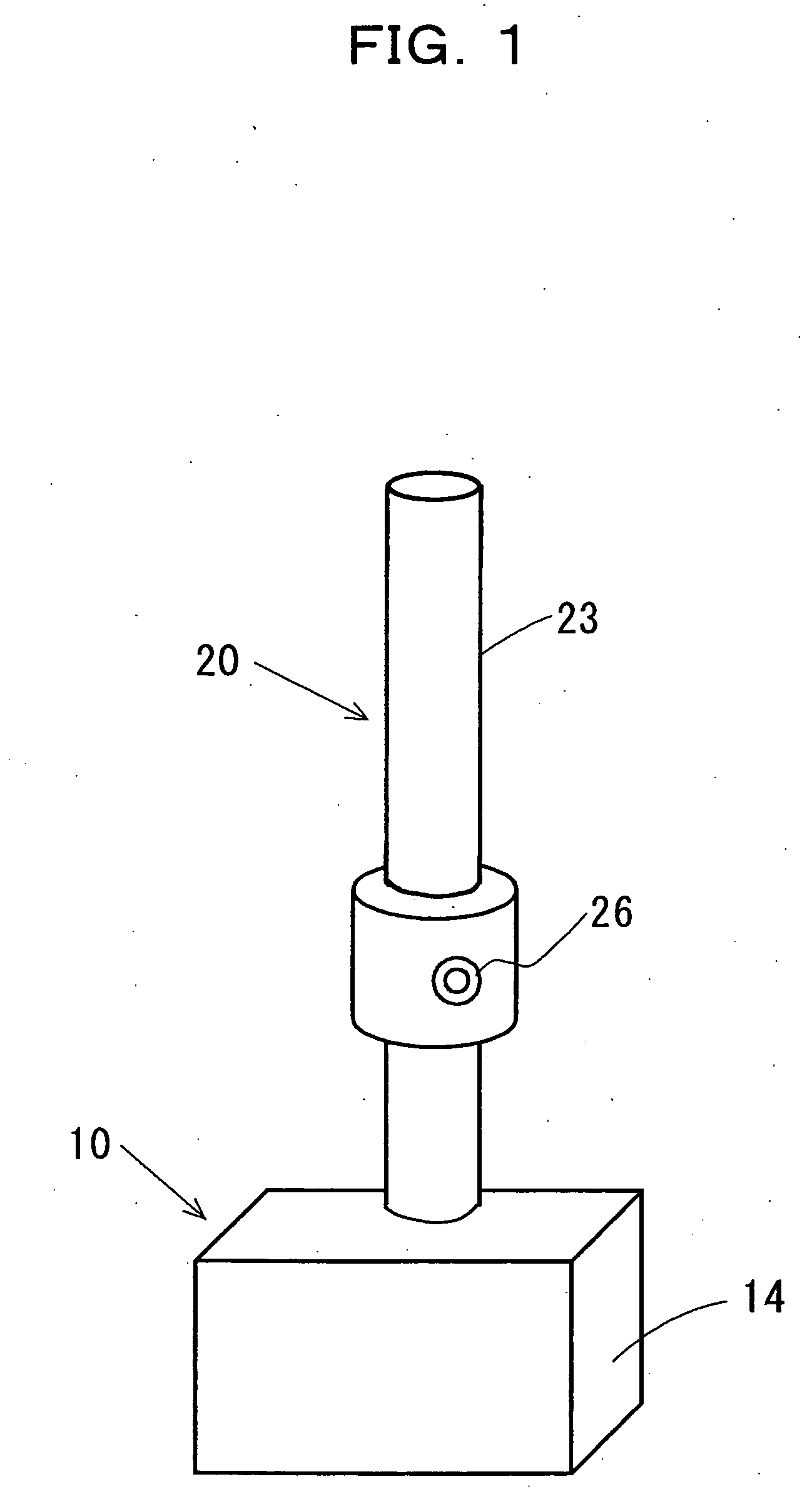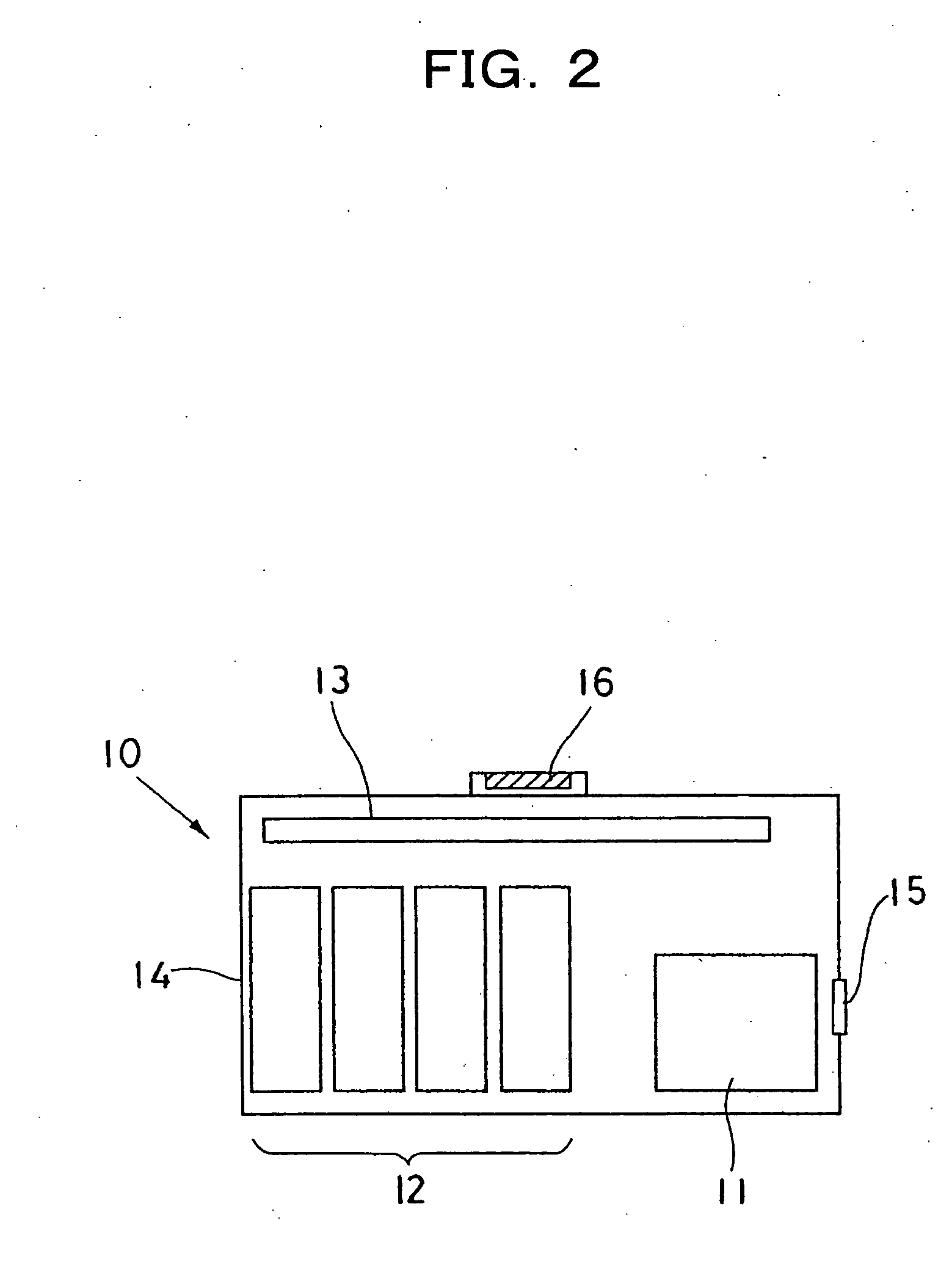Cordless device system
a technology of instrumental system and storage part, which is applied in the field ofcordless instrumental system, can solve the problems of inconvenient storage of consumed cells, laborious exchange of primary batteries, and high cost of cells and maintenance, and achieve the effects of rapid charging of the storage part of the charger, rapid charging and rapid charging
- Summary
- Abstract
- Description
- Claims
- Application Information
AI Technical Summary
Benefits of technology
Problems solved by technology
Method used
Image
Examples
example 1
[0129] Inside of the charger 31 was composed as described below. The direct current source was 1.5V, 5 A. The first storage part 33 was 9.2V-30 F with four electrochemical capacitors of 2.3V-120 F connected in series. The volume of one electrochemical capacitor was 10.2 ml (milliliter), and four make 40.8 ml.
[0130] The third storage part 34 was 12V-1600 mAh with 10 nickel-hydrogen batteries of 1.2V-1600 mAh connected in series. The volume of one nickel-hydrogen battery was 7.4 ml, and 10 make 74 ml.
[0131] Inside of an induction rod 40 was composed as described below. The second storage part 43 was 9.2V-30 F with four electrochemical capacitors of 2.3V-120 F connected in series. The volume of one electrochemical capacitor was 10.2 ml, and four make 40.8 ml.
[0132] The fourth storage part 44 was 8.4V-1600 mAh with seven nickel-hydrogen batteries of 1.2V-1600 mAh connected in series. The volume of one nickel-hydrogen battery was 7.4 ml, and seven make 51.8 ml.
[0133] In this Example ...
example 2
[0134] The cordless instrumental system of same composition as in the above-described Example 1 was manufactured, except for the first storage part 33 inside a charger 31 was 9.2V-30 F with two units 4 series / 2 parallel connected in parallel with a unit of four 2.3V-60 F electric double-layer capacitor connected in series.
[0135] In this case, the first storage part 33 inside the charger 31 was a fully charged state in 3 seconds, and the drivable time of LED was 3 hours when only the second storage part 43 was used. And the continuous drivable time of LED was 110 hours when the nickel-hydrogen battery as the full charged fourth storage part 44 was used.
[0136] The present invention is by no way limited to the above-described embodiments, and needless to say that various modification is possible within the scope of the present invention, which is also included in the range of the present invention. For example, the concrete numerical values of voltage or current or others explained i...
PUM
 Login to View More
Login to View More Abstract
Description
Claims
Application Information
 Login to View More
Login to View More - R&D
- Intellectual Property
- Life Sciences
- Materials
- Tech Scout
- Unparalleled Data Quality
- Higher Quality Content
- 60% Fewer Hallucinations
Browse by: Latest US Patents, China's latest patents, Technical Efficacy Thesaurus, Application Domain, Technology Topic, Popular Technical Reports.
© 2025 PatSnap. All rights reserved.Legal|Privacy policy|Modern Slavery Act Transparency Statement|Sitemap|About US| Contact US: help@patsnap.com



